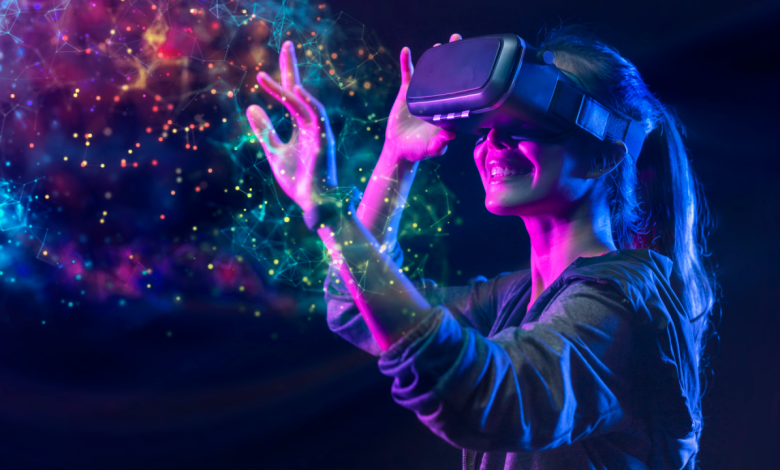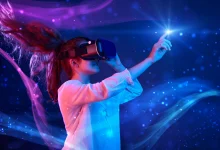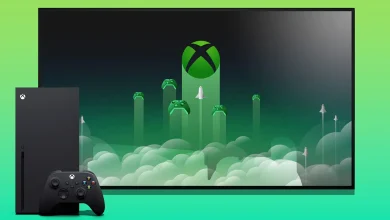Exploring the Realm of Virtual Reality and Augmented Reality: Redefining Interactive Experiences
Redefining Interactive Experiences

Introduction:
Virtual Reality (VR) and Augmented Reality (AR) have emerged as groundbreaking technologies that blur the lines between the digital and physical worlds, offering immersive and interactive experiences like never before. This article delves into the world of VR and AR, exploring their origins, advancements, applications, and the transformative impact they have on various industries.
Origins and Evolution:
The roots of VR and AR can be traced back to the mid-20th century, with early experiments and concepts exploring the idea of creating immersive virtual environments. However, it wasn’t until the late 20th and early 21st centuries that advancements in technology made VR and AR accessible to the masses. The development of powerful computing hardware, high-resolution displays, motion tracking sensors, and immersive audio technologies paved the way for the rise of consumer-grade VR and AR devices.
Virtual Reality (VR):
VR immerses users in fully simulated digital environments, creating a sense of presence and immersion that transports them to different worlds, whether real or imagined. Head-mounted displays (HMDs) like the Oculus Rift, HTC Vive, and PlayStation VR provide users with stereoscopic 3D visuals and positional tracking, allowing them to look around and interact with virtual objects and environments in real-time. VR experiences can range from immersive gaming and entertainment to educational simulations, training simulations, and therapeutic applications.
Augmented Reality (AR):
AR overlays digital content onto the real world, enhancing users’ perception of their surroundings and blending virtual elements with physical reality. AR experiences can be delivered through smartphones, tablets, smart glasses, and wearable devices, using technologies like GPS, cameras, and sensors to detect and track real-world objects and surfaces. Popular AR applications include games like Pokémon GO, navigation apps like Google Maps, and enterprise solutions like remote assistance and maintenance.
Applications and Industries:
VR and AR have transformative applications across a wide range of industries:
Gaming and Entertainment:
VR gaming immerses players in fully interactive virtual worlds, while AR games enhance real-world environments with digital content and interactions. Both technologies offer new opportunities for storytelling, exploration, and social interaction, revolutionizing the gaming and entertainment industry.
Education and Training:
VR and AR provide immersive, hands-on learning experiences for students and professionals across various fields, from medical training and architectural visualization to corporate training and skills development. VR simulations allow learners to practice complex tasks in a safe and controlled environment, while AR overlays contextual information and guidance onto real-world objects.
Healthcare and Therapy:
VR is used in healthcare for pain management, exposure therapy, physical rehabilitation, and surgical training. AR applications provide surgeons with real-time visualizations of patient data and medical imaging during procedures, improving precision and efficiency. VR therapy offers immersive environments for treating phobias, PTSD, and anxiety disorders.
Architecture and Design:
VR and AR are transforming the way architects, engineers, and designers visualize and communicate design concepts. VR enables stakeholders to explore and interact with architectural models in immersive 3D environments, while AR overlays digital blueprints and design elements onto physical spaces, facilitating collaboration and decision-making.
Retail and Marketing:
AR enables retailers to create interactive shopping experiences, allowing customers to visualize products in their own homes before making a purchase. VR can transport shoppers to virtual stores and showrooms, enhancing the online shopping experience and increasing engagement and conversion rates.
Challenges and Future Outlook:
Despite their potential, VR and AR face several challenges, including technological limitations, content accessibility, user comfort, and ethical concerns. However, ongoing advancements in hardware, software, and user experience design are addressing these challenges and driving the adoption of VR and AR across industries. As these technologies continue to evolve, they will become more immersive, intuitive, and integrated into our daily lives, unlocking new opportunities for creativity, collaboration, and innovation.
Conclusion:
Virtual Reality and Augmented Reality are revolutionizing the way we interact with digital content and the world around us, offering immersive, interactive experiences that transcend traditional boundaries. From gaming and entertainment to education, healthcare, and beyond, VR and AR are transforming industries and shaping the future of interactive entertainment. As technology continues to advance and adoption grows, VR and AR will play an increasingly central role in our lives, empowering us to explore, create, and connect in ways previously unimaginable.
Exploring the Boundless Realms of Virtual Reality (VR)
Introduction:
Virtual Reality (VR) stands at the forefront of technological innovation, offering users immersive and interactive experiences that transcend the boundaries of the physical world. From immersive gaming to groundbreaking applications in healthcare, education, and beyond, VR has the potential to revolutionize numerous industries and transform the way we live, work, and play. This article delves into the world of VR, exploring its origins, advancements, applications, and the transformative impact it has on various aspects of human life.
Origins and Evolution:
The concept of virtual reality can be traced back to the mid-20th century, with early experiments and prototypes exploring the idea of creating simulated environments that users could interact with. However, it wasn’t until the late 20th and early 21st centuries that advancements in technology made VR accessible to the masses. The development of high-resolution displays, motion tracking sensors, and immersive audio technologies paved the way for the rise of consumer-grade VR devices.
Key Components of VR:
At the heart of VR technology are several key components that work together to create immersive experiences:
Head-Mounted Display (HMD):
The HMD is the primary interface between the user and the virtual environment, typically consisting of a high-resolution display screen, lenses, and motion tracking sensors. HMDs like the Oculus Rift, HTC Vive, and PlayStation VR provide users with stereoscopic 3D visuals and positional tracking, allowing them to look around and interact with virtual objects and environments in real-time.
Motion Tracking Systems:
Motion tracking systems use sensors, cameras, and gyroscopes to detect the user’s movements and translate them into the virtual environment. These systems enable users to move freely within virtual spaces, enhancing the sense of immersion and presence.
Input Devices:
Input devices such as handheld controllers, motion-sensing gloves, and haptic feedback devices allow users to interact with virtual objects and environments. These devices provide tactile feedback and simulate the sensation of touch, adding another layer of realism to VR experiences.
Applications of VR:
VR has transformative applications across a wide range of industries and fields:
Gaming and Entertainment:
VR gaming immerses players in fully interactive virtual worlds, allowing them to explore, interact, and engage with digital environments in unprecedented ways. From immersive story-driven adventures to adrenaline-pumping action games, VR gaming offers experiences that blur the line between reality and fiction.
Education and Training:
VR provides immersive, hands-on learning experiences for students and professionals across various fields. VR simulations allow learners to practice complex tasks, conduct experiments, and explore historical or scientific environments in a safe and controlled setting. From medical training and architectural visualization to corporate training and skills development, VR is revolutionizing education and training.
Healthcare and Therapy:
VR is used in healthcare for pain management, exposure therapy, physical rehabilitation, and surgical training. VR simulations allow healthcare professionals to practice procedures, diagnose conditions, and train for emergency situations in a realistic and risk-free environment. VR therapy offers immersive environments for treating phobias, PTSD, and anxiety disorders, providing patients with a safe and effective means of therapy.
Design and Visualization:
VR enables architects, engineers, and designers to visualize and interact with 3D models and prototypes in immersive virtual environments. VR design tools allow users to explore spatial relationships, test design concepts, and collaborate with stakeholders in real-time, streamlining the design process and improving communication and decision-making.
Challenges and Future Outlook:
Despite its potential, VR still faces several challenges, including technological limitations, content accessibility, user comfort, and ethical concerns. However, ongoing advancements in hardware, software, and user experience design are addressing these challenges and driving the adoption of VR across industries. As technology continues to evolve and adoption grows, VR will become more immersive, intuitive, and integrated into our daily lives, unlocking new opportunities for creativity, collaboration, and innovation.
Conclusion:
Virtual Reality is a transformative technology that has the power to revolutionize numerous industries and reshape the way we live, work, and play. From immersive gaming experiences to groundbreaking applications in healthcare, education, and beyond, VR offers endless possibilities for exploration, creativity, and discovery. As VR technology continues to advance and adoption grows, it will undoubtedly play an increasingly central role in our lives, empowering us to explore new worlds, connect with others, and experience the boundless realms of imagination and possibility.
Introduction to Virtual Reality and Augmented Reality
Virtual reality (VR) and augmented reality (AR) have transformed the way we perceive and interact with the digital world. These immersive technologies have opened up new avenues for entertainment, education, healthcare, architecture, marketing, and various other industries. In this article, I will delve into the fascinating world of VR and AR, exploring their differences, evolution, applications, benefits, limitations, and their potential to shape the future.
The Difference between Virtual Reality and Augmented Reality
While VR and AR are often used interchangeably, they have distinct characteristics. Virtual reality creates a simulated environment that completely immerses the user, replacing the real world with a digital one. Users wear a head-mounted display (HMD) that covers their eyes and ears, making them feel as if they are physically present in a different reality. On the other hand, augmented reality overlays digital elements onto the real world, enhancing the user’s perception of reality. AR is typically experienced through smartphones or smart glasses, which allow users to see and interact with virtual objects in their actual surroundings.
The History and Evolution of Virtual Reality and Augmented Reality
The concept of VR dates back to the 1960s when Ivan Sutherland created the first head-mounted display system. However, it wasn’t until the 1990s that VR gained commercial popularity with the release of the Virtuality arcade machine. Over the years, advancements in technology have made VR more accessible and affordable. AR, on the other hand, gained prominence in the early 2000s with the introduction of the ARToolkit. The launch of smartphones and the development of ARKit and ARCore further propelled the growth of AR.
Applications of Virtual Reality and Augmented Reality in Various Industries
VR and AR have revolutionized multiple industries, offering unique and immersive experiences. In the gaming industry, VR has taken gaming to a whole new level, transporting players into virtual worlds where they can interact with the environment and characters. AR, on the other hand, has brought games like Pokemon Go to life, blending virtual elements with the real world. In the education and training sector, VR and AR have made learning more engaging and interactive. Medical professionals are using VR to simulate surgeries and train students in a risk-free environment. Architects and designers are leveraging VR and AR to visualize and present their designs to clients, providing a realistic preview of the final product.
Potential Benefits of Virtual Reality and Augmented Reality
The potential benefits of VR and AR are vast and varied. In healthcare, VR is being used for pain management, therapy, and rehabilitation. It allows patients to escape their physical surroundings and experience virtual environments that can aid in their healing process. AR, on the other hand, is being used for medical imaging, allowing doctors to overlay virtual images onto the patient’s body for more accurate diagnoses. In marketing and advertising, VR and AR offer immersive experiences that captivate consumers and create lasting impressions. Brands can use these technologies to showcase their products in unique and interactive ways, enhancing customer engagement.
Challenges and Limitations of Virtual Reality and Augmented Reality
While VR and AR hold immense potential, they also face several challenges and limitations. One of the major challenges is the high cost associated with developing and implementing VR and AR solutions. The technology is still relatively new, and the hardware required can be expensive for both consumers and businesses. Another challenge is the issue of motion sickness, which some users experience when using VR. The limited field of view and the need for accurate tracking also pose challenges in creating truly immersive experiences. Additionally, the ethical and privacy concerns surrounding VR and AR need to be addressed to ensure the responsible use of these technologies.
Virtual Reality and Augmented Reality Devices and Technology
The advancement of VR and AR technologies has led to the development of various devices and platforms. Oculus Rift, HTC Vive, and PlayStation VR are some of the popular VR headsets available in the market. These headsets offer high-quality visuals and immersive experiences. For AR, devices like Microsoft HoloLens and Google Glass provide users with the ability to overlay digital content onto the real world. In addition to dedicated devices, smartphones have become a common platform for experiencing AR through apps like Snapchat and Instagram filters.
How Virtual Reality and Augmented Reality are Changing the Gaming Industry
The gaming industry has been at the forefront of embracing VR and AR technologies. VR gaming has introduced a whole new level of immersion, allowing players to step into their favorite games and interact with the virtual environment. The sense of presence and the ability to physically move within the game world enhance the gaming experience. AR gaming, on the other hand, has brought gaming into the real world, merging virtual characters and objects with the player’s surroundings. Games like Pokemon Go have demonstrated the potential of AR in creating social and location-based gaming experiences.
Virtual Reality and Augmented Reality in Education and Training
VR and AR have transformed education and training, making learning more engaging, interactive, and accessible. In classrooms, VR can transport students to historical events, different countries, or even microscopic worlds, providing a deeper understanding of the subject matter. AR can overlay virtual content onto textbooks, turning static images into interactive 3D models. In the corporate world, VR and AR are being used for employee training. Simulations and virtual scenarios allow employees to practice and refine their skills in a realistic environment, reducing the risk of errors and accidents.
Virtual Reality and Augmented Reality in Healthcare
The healthcare industry has embraced VR and AR for a wide range of applications. VR is being used for pain management, providing distraction and relaxation techniques for patients undergoing medical procedures. It has also proven effective in treating phobias and post-traumatic stress disorder. AR, on the other hand, is being used for medical imaging and visualization. Surgeons can overlay virtual images onto the patient’s body during surgeries, aiding in precision and accuracy. AR is also being used for telemedicine, enabling remote consultations and surgeries with the help of augmented reality glasses.
Virtual Reality and Augmented Reality in Architecture and Design
VR and AR have revolutionized the way architects and designers visualize and present their projects. With VR, architects can create virtual walkthroughs of their designs, allowing clients to experience the space before it is built. This immersive experience helps clients make informed decisions and provides a realistic preview of the final product. AR, on the other hand, enables architects to overlay virtual elements onto the physical environment. They can visualize how a building will look in its surroundings, test different materials and finishes, and make real-time changes to the design.
Virtual Reality and Augmented Reality in Marketing and Advertising
VR and AR have opened up new possibilities in marketing and advertising, creating unique and immersive experiences for consumers. Brands can use VR to transport customers to different locations, allowing them to explore products and services in a virtual environment. VR can also be used to create interactive storytelling experiences, where users actively participate in the narrative. AR, on the other hand, allows brands to overlay virtual content onto the real world, creating interactive displays and advertisements. AR can also be used for product visualization, allowing customers to try out virtual versions of products before making a purchase.
The Future of Virtual Reality and Augmented Reality
The future of VR and AR is filled with endless possibilities. As technology continues to evolve, we can expect more advanced and affordable devices, improved graphics, and enhanced user experiences. The integration of VR and AR with artificial intelligence and machine learning will further enhance the capabilities of these technologies. We can also anticipate the development of more applications in industries like tourism, sports, entertainment, and social networking. The potential for collaboration and communication in virtual and augmented environments is immense, offering new ways for people to connect and interact.
Conclusion
Virtual reality and augmented reality have transformed the way we perceive and interact with the digital world. These immersive technologies have revolutionized various industries, from gaming and education to healthcare and advertising. While they face challenges and limitations, the potential benefits of VR and AR are vast. As technology continues to advance, we can expect even more exciting applications and experiences. With VR and AR, we are unlocking the future and exploring the boundless possibilities that these technologies offer.
Exploring the Boundless Realms of Virtual Reality (VR)
Introduction:
Virtual Reality (VR) stands at the forefront of technological innovation, offering users immersive and interactive experiences that transcend the boundaries of the physical world. From immersive gaming to groundbreaking applications in healthcare, education, and beyond, VR has the potential to revolutionize numerous industries and transform the way we live, work, and play. This article delves into the world of VR, exploring its origins, advancements, applications, and the transformative impact it has on various aspects of human life.
Origins and Evolution:
The concept of virtual reality can be traced back to the mid-20th century, with early experiments and prototypes exploring the idea of creating simulated environments that users could interact with. However, it wasn’t until the late 20th and early 21st centuries that advancements in technology made VR accessible to the masses. The development of high-resolution displays, motion tracking sensors, and immersive audio technologies paved the way for the rise of consumer-grade VR devices.
Challenges and Future Outlook:
Despite its potential, VR still faces several challenges, including technological limitations, content accessibility, user comfort, and ethical concerns. However, ongoing advancements in hardware, software, and user experience design are addressing these challenges and driving the adoption of VR across industries. As technology continues to evolve and adoption grows, VR will become more immersive, intuitive, and integrated into our daily lives, unlocking new opportunities for creativity, collaboration, and innovation.
Conclusion:
Virtual Reality is a transformative technology that has the power to revolutionize numerous industries and reshape the way we live, work, and play. From immersive gaming experiences to groundbreaking applications in healthcare, education, and beyond, VR offers endless possibilities for exploration, creativity, and discovery. As VR technology continues to advance and adoption grows, it will undoubtedly play an increasingly central role in our lives, empowering us to explore new worlds, connect with others, and experience the boundless realms of imagination and possibility.











